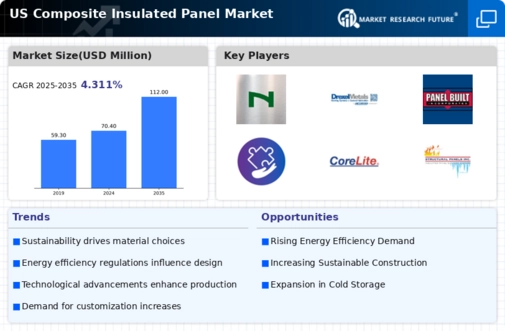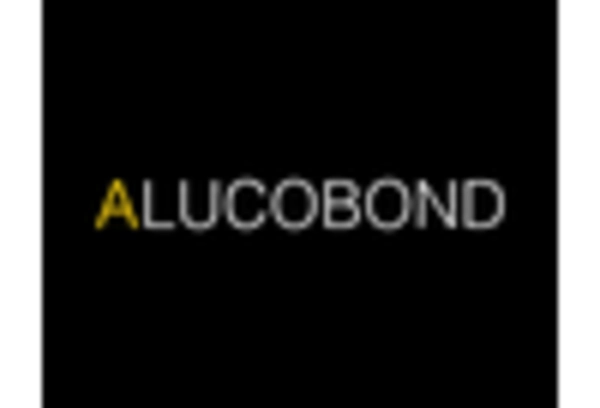Rising Energy Efficiency Standards
The market is experiencing a notable surge due to the increasing energy efficiency standards mandated by regulatory bodies in the US. These standards aim to reduce energy consumption in buildings, thereby promoting the use of materials that offer superior insulation properties. Composite insulated panels, known for their excellent thermal performance, are becoming a preferred choice among builders and architects. As of 2025, the market is projected to grow at a CAGR of approximately 6.5%, driven by these stringent regulations. The push for energy-efficient construction not only aligns with environmental goals but also offers long-term cost savings for building owners, further solidifying the role of composite insulated panels in the market.
Expansion of the Construction Sector
The composite insulated-panel market is experiencing growth driven by the expansion of the construction sector in the US. With increasing investments in residential and commercial construction, the demand for efficient building materials is on the rise. Composite insulated panels, known for their versatility and energy efficiency, are becoming a staple in new construction projects. The construction sector is projected to grow by 4% annually, creating a favorable environment for composite insulated panels. This expansion is likely to be fueled by urbanization trends and the need for modern infrastructure, further solidifying the market's position in the industry.
Technological Innovations in Manufacturing
The composite insulated-panel market is poised for growth due to ongoing technological innovations in manufacturing processes. Advances in production techniques, such as improved bonding methods and enhanced material formulations, are leading to higher quality panels with better insulation properties. These innovations not only improve the performance of composite insulated panels but also reduce production costs, making them more accessible to a wider range of consumers. As manufacturers continue to invest in research and development, the market is expected to expand, with a projected increase in market share of approximately 5% by 2027. This trend indicates a promising future for composite insulated panels in the construction industry.
Growing Demand for Prefabricated Construction
The composite insulated-panel market is benefiting from the rising demand for prefabricated construction methods in the US. This trend is largely attributed to the need for faster construction timelines and reduced labor costs. Prefabricated panels, which include composite insulated options, allow for quicker assembly on-site, minimizing delays and enhancing project efficiency. Prefabricated construction is expected to reach $200 billion by 2026, with composite insulated panels playing a crucial role in this growth. Their lightweight nature and ease of installation make them an attractive option for contractors, thereby driving their adoption in various construction projects across the country.
Increased Focus on Sustainable Building Practices
The composite insulated-panel market is significantly influenced by the heightened focus on sustainable building practices in the US. As environmental concerns continue to rise, builders are increasingly seeking materials that not only meet performance standards but also contribute to sustainability goals. Composite insulated panels, often made from recyclable materials, align well with these objectives. The market is projected to see a growth rate of around 7% annually as more construction projects aim for LEED certification and other green building standards. This shift towards sustainability is likely to enhance the demand for composite insulated panels, positioning them as a key player in the evolving construction landscape.

















Leave a Comment